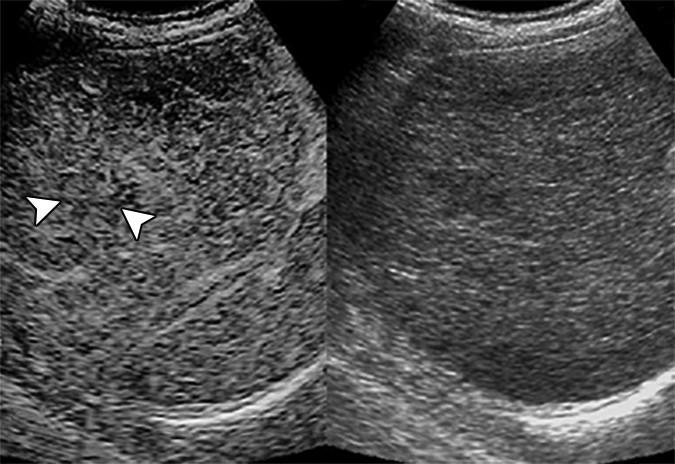AJR research pinpoints sonographic biomarkers for the malignant transformation of cirrhotic nodules into hepatocellular carcinoma (HCC)–stratifying probability for HCC within the LI-RADS system and enabling customized surveillance strategies

Credit: American Journal of Roentgenology (AJR)
Leesburg, VA, October 24, 2019–An article published ahead-of-print in the January 2020 issue of the American Journal of Roentgenology (AJR) has identified sonographic biomarkers that can predict eventual malignant transformation of pathologically confirmed cirrhotic nodules for patients at risk for hepatocellular carcinoma (HCC).
Lead investigator Manxia Lin of China’s Sun Yat-Sen University retrospectively studied 39 consecutive patients with 44 pathologically confirmed cirrhotic nodules who initially underwent contrast-enhanced ultrasound (CEUS) examination at detection, followed by conventional ultrasound every 3-4 months thereafter.
Fourteen nodules (31.8%) evidenced eventual malignant transformation after a median follow-up time of 26.7 months.
According to Lin and colleagues’ results, the contrast arrival time difference between the cirrhotic nodule and the liver on CEUS proved useful in stratifying eventual malignant transformation risk–“which may enable a more customized surveillance strategy,” they noted.
“During surveillance,” Lin et al. continued, “a relative growth rate of 30% or greater in 6 months or an absolute growth rate of 5 mm or greater in 6 months highly indicated malignant transformation.”
Moreover, Lin’s team determined that the absence of both echogenicity change and threshold growth “significantly excluded malignant transformation.”
Acknowledging that additional studies will be necessary for validating possible biomarkers, Lin concluded: “These additional imaging features may have the potential to be adopted as ancillary or even major features to stratify probability for HCC in the CEUS LI-RADS system.”
###
Founded in 1900, the American Roentgen Ray Society (ARRS) is the first and oldest radiology society in the North America, dedicated to the advancement of medicine through the profession of radiology and its allied sciences. An international forum for progress since the discovery of the x-ray, ARRS maintains its mission of improving health through a community committed to advancing knowledge and skills with an annual scientific meeting, monthly publication of the peer-reviewed American Journal of Roentgenology (AJR), quarterly issues of InPractice magazine, AJR Live Webinars and Podcasts, topical symposia, print and online educational materials, as well as awarding scholarships via The Roentgen Fund®.
Media Contact
Logan K. Young
[email protected]
703-858-4332
Original Source
https:/
Related Journal Article
http://dx.



